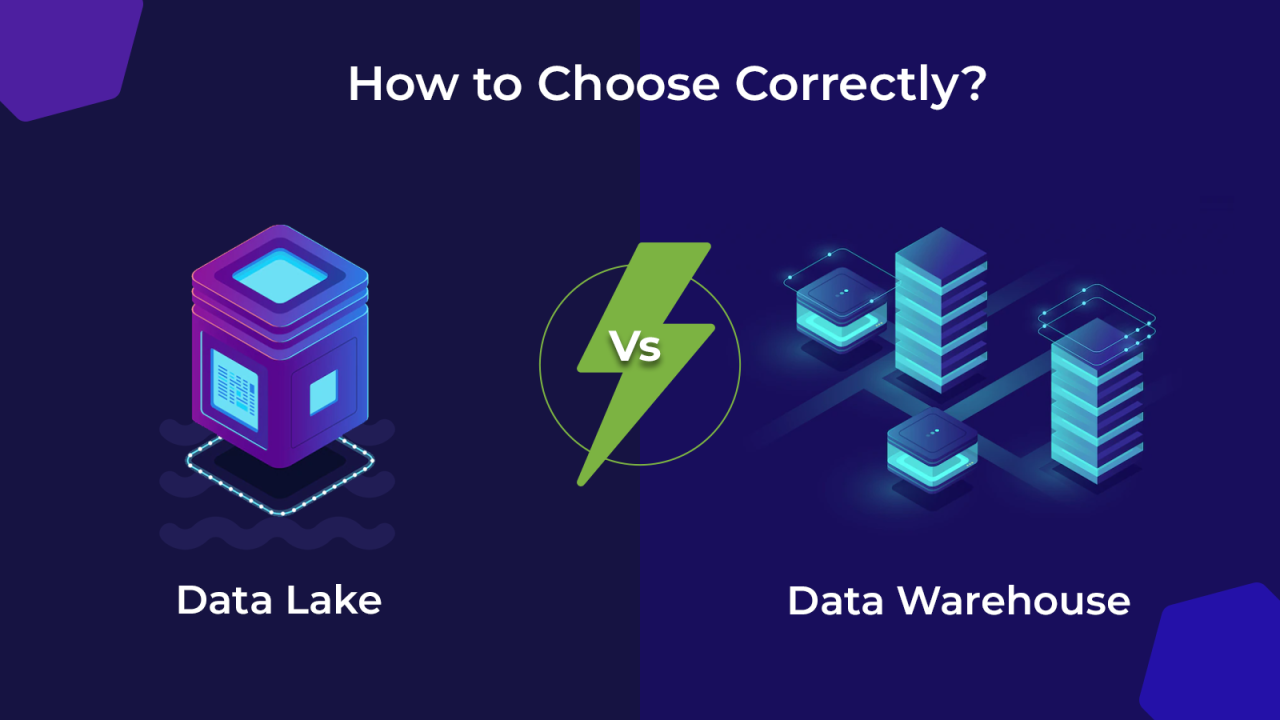In the unpredictable currents of the digital age, where unforeseen disruptions—from natural calamities to cyberattacks and technical failures—can strike at any moment, the ability of an organization to swiftly recover and maintain continuity is not merely a technical safeguard but a fundamental business imperative. This is the essence of Disaster Recovery (DR), a critical discipline that ensures the resilience of operations in the face of adversity. Far beyond simple data backups, modern DR is about crafting comprehensive, proactive strategies that guarantee the rapid restoration of critical IT systems, applications, and data, minimizing downtime and mitigating financial, reputational, and operational fallout. It’s the meticulous art and science of preparing for the worst, enabling truly resilient operations and ensuring business mastery even amidst chaos.
The Imperative for Resilience: Why DR is Non-Negotiable
To truly grasp the significance of robust Disaster Recovery, it’s essential to understand the multitude of threats that organizations face and the escalating costs associated with downtime and data loss in today’s interconnected world.
A. The Evolving Threat Landscape
The risks to business operations are more diverse, frequent, and severe than ever before, moving beyond traditional natural disasters to include human-made and digital threats.
- Natural Disasters: Earthquakes, floods, hurricanes, wildfires, and extreme weather events can devastate physical data centers, disrupting power, connectivity, and infrastructure, leading to widespread outages.
- Cyberattacks: Ransomware, denial-of-service (DoS) attacks, data breaches, and malicious insider threats can cripple IT systems, corrupt data, or render operations inoperable, often with high financial and reputational costs.
- Human Error: Accidental data deletion, misconfigurations, flawed software deployments, or operational mistakes by employees remain a leading cause of outages and data loss, despite increasing automation.
- Hardware/Software Failures: Equipment malfunctions (e.g., server crashes, network device failures, storage array corruption), software bugs, or unexpected system crashes are commonplace and can severely disrupt services.
- Power Outages: Unplanned power interruptions, even brief ones, can cause data corruption, system shutdowns, and prolonged downtime if not properly managed with redundant power supplies and generators.
- Geopolitical Instability: Regional conflicts, political unrest, or infrastructure sabotage can disrupt international connectivity, supply chains, and access to vital services, creating widespread operational challenges.
B. The Escalating Cost of Downtime
In the always-on digital economy, every minute of downtime carries a significant and often escalating financial burden, alongside severe damage to reputation.
- Direct Financial Losses: This includes lost sales/revenue, diminished productivity of employees, contractual penalties for service level agreement (SLA) breaches, and costs associated with incident response, data recovery, and external forensics. For many businesses, an hour of downtime can cost hundreds of thousands, or even millions, of dollars.
- Reputational Damage: Prolonged outages or data breaches erode customer trust, damage brand image, and can lead to long-term customer churn. Negative media coverage can amplify this damage, making recovery even harder.
- Regulatory Fines and Legal Ramifications: Data breaches or failure to comply with data protection regulations (e.g., GDPR, HIPAA, CCPA) due to inadequate recovery plans can result in massive fines and costly legal battles.
- Operational Disruption: Beyond direct financial costs, downtime severely disrupts internal operations, impacting supply chains, customer service, and employee morale, creating a cascade of inefficiencies.
- Loss of Critical Data: In severe cases, inadequate DR can lead to irreversible data loss, which can be catastrophic for businesses reliant on historical records, customer information, or intellectual property.
These compelling factors underscore that Disaster Recovery is no longer an optional IT function but a strategic business imperative for organizational survival and sustained growth.
Foundational Concepts: Defining Disaster Recovery Parameters
Effective Disaster Recovery planning hinges on clearly defined objectives and an understanding of critical metrics that guide strategy and investment.
A. Recovery Time Objective (RTO)
The Recovery Time Objective (RTO) defines the maximum acceptable amount of time that an application or system can be down after a disaster before it causes unacceptable damage to the business.
- Time to Restoration: It’s the target duration of time from the moment a disaster begins until business operations can be fully restored to a functional state.
- Business Impact Analysis (BIA): RTOs are determined through a Business Impact Analysis, which assesses the financial and operational impact of downtime for each critical application or business process. Mission-critical systems (e.g., financial transactions, patient records) will have very low RTOs (minutes to hours), while less critical systems might have RTOs of days.
- Cost vs. RTO: Achieving lower RTOs typically requires more sophisticated (and expensive) DR solutions, such as active-active replication or hot standby sites. Organizations must balance the cost of recovery with the cost of downtime.
B. Recovery Point Objective (RPO)
The Recovery Point Objective (RPO) defines the maximum acceptable amount of data that an application or system can afford to lose after a disaster.
- Data Loss Tolerance: It’s the point in time to which data must be recovered. For example, an RPO of 1 hour means you can only afford to lose up to 1 hour’s worth of data.
- Determining RPO: RPOs are also determined by BIA, assessing the impact of data loss. Highly transactional systems (e.g., e-commerce, banking) will have very low RPOs (near-zero data loss), often requiring continuous data replication. Less critical systems might tolerate RPOs of several hours or even 24 hours (daily backups).
- Cost vs. RPO: Achieving lower RPOs requires more frequent backups or continuous data replication (e.g., synchronous or asynchronous replication), which incurs higher costs in terms of bandwidth, storage, and infrastructure.
C. Disaster Recovery Plan (DRP)
The Disaster Recovery Plan (DRP) is a comprehensive, documented set of procedures that details how an organization will recover its critical IT systems and data after a disaster.
- Comprehensive Documentation: It outlines roles and responsibilities, contact information, recovery steps for each system, dependencies, and communication protocols.
- Pre-defined Scenarios: Often includes specific recovery procedures for different types of disasters (e.g., data center outage, cyberattack).
- Testing and Maintenance Schedule: Specifies how often the DRP will be tested and updated to ensure its effectiveness and relevance.
- Beyond IT: While focused on IT, a DRP should integrate with the broader Business Continuity Plan (BCP), which addresses continued business operations, personnel, and facilities.
D. Business Continuity Plan (BCP)
The Business Continuity Plan (BCP) is a broader plan that outlines how an organization will continue to operate its essential business functions during and after a disaster, not just IT systems.
- Scope: Encompasses people, facilities, processes, and IT. It considers how employees will work remotely, alternative facility arrangements, critical vendor relationships, and communication with stakeholders.
- Minimizing Disruption: The BCP aims to minimize the overall disruption to the business, ensuring that revenue generation, customer service, and essential operations can resume as quickly as possible.
- Integration with DRP: The DRP is a critical component of the BCP, providing the detailed steps for IT recovery that enable overall business continuity.
Core Strategies and Technologies for Modern Disaster Recovery
Achieving robust Disaster Recovery involves implementing a combination of strategies and leveraging advanced technologies to meet defined RTOs and RPOs.
A. Data Backup and Restoration
The foundation of any DR strategy is creating reliable backups and having a clear process for restoring them.
- Regular Backups: Implementing automated, scheduled backups of all critical data and system configurations. Frequency depends on RPO.
- Off-site/Cloud Storage: Storing backups in geographically separate locations (off-site physical storage or, more commonly, cloud object storage like AWS S3, Azure Blob Storage) to protect against site-specific disasters.
- Version Control for Backups: Maintaining multiple versions of backups to allow restoration to different points in time, crucial for recovering from data corruption or ransomware attacks.
- Automated Backup Verification: Regularly verifying the integrity and restorability of backups to ensure they are not corrupted and can actually be used in a disaster scenario.
B. Data Replication
For lower RPOs (minimal data loss), data replication is crucial, often used for databases and critical application data.
- Synchronous Replication: Data is written simultaneously to both the primary and replica sites. This offers near-zero RPO but introduces latency and typically requires the sites to be geographically close. Used for mission-critical applications.
- Asynchronous Replication: Data is written to the primary site first, then replicated to the secondary site with a slight delay. This offers a low RPO (seconds to minutes) with less latency impact over longer distances. It’s more common for general DR.
- Continuous Data Protection (CDP): Captures every change to data, allowing recovery to any point in time, offering the lowest possible RPO. This is typically implemented at the storage or hypervisor level.
C. Disaster Recovery Sites (Recovery Models)
The choice of recovery site strategy directly impacts RTO and RPO.
- Cold Site: A basic facility with power and connectivity but no equipment. Requires significant time (days/weeks) to procure and set up hardware. Offers the highest RTO, lowest cost.
- Warm Site: A facility with basic hardware already in place (servers, networking), but data and applications need to be loaded. Offers a moderate RTO (hours/days). More expensive than cold, less than hot.
- Hot Site: A fully equipped, continuously updated replica of the primary data center. Offers very low RTO (minutes/hours) due to pre-configured hardware and replicated data. Most expensive option.
- Cloud-Based DR: Leveraging public cloud providers (AWS, Azure, Google Cloud) for DR.
- Pilot Light: Core infrastructure is running in the cloud, scaled up only during a disaster. Moderate RTO/RPO.
- Warm Standby: A scaled-down but running version of the environment in the cloud, ready to be scaled up. Low RTO/RPO.
- Multi-Site Active-Active: Both on-premise and cloud (or multiple cloud regions) are actively serving traffic, offering the lowest RTO/RPO but highest complexity and cost.
Cloud-based DR is increasingly popular due to its flexibility, scalability, and pay-as-you-go cost model, reducing the need for costly secondary physical data centers.
D. High Availability (HA) Architectures
While distinct from DR, High Availability (HA) is often a precursor to or complement for DR, minimizing local outages. HA focuses on preventing downtime within a single site.
- Redundant Components: Duplicating critical hardware (power supplies, network cards, servers, storage controllers) within a system or cluster.
- Clustering: Grouping multiple servers to work together, so if one fails, others can take over its workload without interruption.
- Load Balancing: Distributing incoming traffic across multiple active servers or instances to prevent single points of failure and optimize performance.
- Automatic Failover: Systems designed to automatically switch to a standby component or replica if the primary one fails.
HA helps meet RTOs/RPOs within a single location; DR handles site-wide disasters.
E. Orchestration and Automation for Recovery
Manual recovery processes are slow and error-prone. Automation is key to meeting tight RTOs.
- DR Orchestration Tools: Software that automates the complex sequence of tasks required for recovery, including spinning up virtual machines, restoring data, configuring networks, and starting applications in the correct order.
- Infrastructure as Code (IaC): Defining DR infrastructure (e.g., cloud environments, network configurations) in code (e.g., Terraform, CloudFormation). This ensures consistent, repeatable, and rapid provisioning of recovery environments.
- Automated Testing: Building automated processes to regularly test DR plans without human intervention, ensuring their reliability.
The Comprehensive Disaster Recovery Planning Process
Developing and maintaining an effective Disaster Recovery strategy is an ongoing process that requires meticulous planning, thorough testing, and continuous refinement.
A. Business Impact Analysis (BIA)
The foundational step is to conduct a thorough Business Impact Analysis (BIA).
- Identify Critical Business Functions: Determine which business processes are most vital for the organization’s survival and success.
- Identify Critical IT Systems: Map these business functions to the underlying IT systems, applications, and data that support them.
- Quantify Impact of Downtime/Data Loss: Assess the financial (lost revenue, penalties) and non-financial (reputational damage, legal/compliance risks) consequences of downtime and data loss for each system over time.
- Define RTO and RPO: Based on the impact analysis, establish specific, measurable Recovery Time Objectives (RTOs) and Recovery Point Objectives (RPOs) for each critical system. These metrics will drive your DR strategy.
B. Risk Assessment
After understanding impacts, identify potential threats.
- Identify Potential Disasters: List all possible threats (e.g., natural disasters relevant to your location, common cyber threats, power failures, human errors).
- Assess Likelihood and Impact: For each threat, evaluate its probability of occurrence and its potential impact on your critical systems. This helps prioritize risks.
- Identify Vulnerabilities: Pinpoint weaknesses in your current IT infrastructure, processes, or security posture that could be exploited by threats.
C. Strategy Development and Solution Design
Based on BIA and risk assessment, design the DR strategy.
- Choose DR Approach: Select the appropriate DR site strategy (e.g., cold, warm, hot, cloud-based pilot light/warm standby/active-active) based on your RTO/RPO targets and budget.
- Select Technologies: Choose specific backup solutions, replication technologies, DR orchestration tools, and cloud services that align with your strategy.
- Architect Solutions: Design the detailed architecture for recovery, including network topology, server configurations, data flow, and application dependencies.
- Define Roles and Responsibilities: Clearly assign roles and responsibilities to individuals and teams for executing the DR plan.
D. Plan Documentation
A detailed, clear, and accessible Disaster Recovery Plan (DRP) document is paramount.
- Executive Summary: High-level overview of the plan.
- Roles and Responsibilities: Contact lists, team leads, and their specific duties during a disaster.
- Recovery Procedures: Step-by-step instructions for recovering each critical system, including dependencies, configuration details, and necessary credentials.
- Communication Plan: Protocols for communicating with employees, customers, stakeholders, and media during a disaster.
- Testing and Maintenance Schedule: Outline for regular testing and review.
- Location: Store the DRP in multiple, secure, off-site locations (both digital and physical copies) accessible even during a full outage.
E. Implementation and Setup
Put the plan into action.
- Procure Hardware/Software: Acquire necessary hardware, software licenses, and cloud subscriptions.
- Configure Infrastructure: Set up the recovery site, network connectivity, and integrate chosen DR technologies.
- Data Replication/Backup Setup: Implement backup schedules, data replication streams, and ensure data integrity.
- Tool Integration: Integrate DR orchestration tools with your existing IT environment and CI/CD pipelines.
F. Testing, Validation, and Refinement
This is the most critical phase, ensuring the plan actually works.
- Regular Testing: Conduct periodic, realistic DR tests (e.g., tabletop exercises, simulated failovers, full-scale drills) to validate the plan’s effectiveness and identify weaknesses. Test against different disaster scenarios.
- Validation: Verify that RTOs and RPOs are met during tests and that recovered systems function as expected.
- Post-Test Review: Conduct a thorough review after each test, documenting lessons learned, identifying gaps, and providing actionable recommendations for improvement.
- Continuous Refinement: Update the DRP based on test results, changes in IT infrastructure, business requirements, and the evolving threat landscape. DR is not a static document; it’s a living process.
- Automated Testing: Where possible, automate parts of the DR testing process to increase frequency and reliability.
Key Trends and Innovations Shaping Future Disaster Recovery
The field of Disaster Recovery is continually evolving, driven by cloud computing, advanced automation, and the increasing sophistication of threats.
A. Cloud-Native DR and Multi-Cloud Strategies
The cloud has become the dominant platform for modern DR, enabling unprecedented flexibility and cost-effectiveness.
- Cloud as the Primary DR Site: Organizations increasingly use public clouds (AWS, Azure, Google Cloud) as their secondary DR sites, avoiding the capital expenditure and maintenance of a physical hot/warm site.
- Cloud-Native DR Solutions: Leveraging cloud-specific DR services (e.g., AWS CloudEndure, Azure Site Recovery, Google Cloud DR Solutions) that offer automated replication, orchestration, and failover capabilities directly integrated with cloud infrastructure.
- Multi-Cloud DR: For enhanced resilience, some organizations are exploring multi-cloud DR strategies, replicating data and applications across different cloud providers to avoid single-vendor lock-in or region-specific outages. This adds complexity but offers maximum diversification.
B. AI and Machine Learning in DR
Artificial Intelligence is set to revolutionize DR by enhancing predictive capabilities and automation.
- Predictive Failure Analysis: AI/ML algorithms analyze historical data and real-time operational metrics to predict potential hardware failures, software anomalies, or system overloads before they lead to an outage, allowing for proactive intervention.
- Automated Anomaly Detection: AI-powered monitoring systems can quickly detect subtle deviations from normal behavior that might indicate a cyberattack or a system compromise, triggering early alerts.
- Intelligent Orchestration and Remediation: AI could dynamically optimize recovery procedures based on the specific type of disaster and available resources, potentially even triggering automated remediation steps for common issues, reducing RTOs further.
- DR Test Optimization: AI could help in designing more effective DR test scenarios and analyzing test results to pinpoint weaknesses more efficiently.
C. Immutable Infrastructure and Site Reliability Engineering (SRE)
These modern operational paradigms inherently enhance DR capabilities.
- Immutable Infrastructure: Building infrastructure components (e.g., virtual machines, containers) from a consistent, version-controlled image and replacing them entirely for updates rather than modifying them in place. This greatly reduces configuration drift and makes recovery more predictable and reliable, as any instance can be rebuilt identically.
- Site Reliability Engineering (SRE): An operational discipline that applies software engineering principles to infrastructure and operations problems. SRE teams focus on reliability, availability, and performance. Their emphasis on automation, observability, and error budgets naturally aligns with and strengthens DR efforts.
D. Cyber Resilience: Beyond Recovery to Survival
The focus is shifting from simply recovering from a disaster to building overall cyber resilience, emphasizing the ability to absorb, adapt to, and rapidly recover from cyberattacks.
- Ransomware Recovery Strategies: Specific DR strategies tailored to ransomware attacks, including air-gapped backups, immutable storage, and robust data integrity checks to ensure clean recovery points.
- Incident Response Automation: Automating playbooks for cybersecurity incident response, allowing for faster containment, eradication, and recovery from breaches.
- Zero-Trust Security Integration: Implementing zero-trust architectures that assume no inherent trust, reducing the blast radius of a successful attack and making recovery easier.
E. Data Governance and Data-Centric DR
As data becomes the most valuable asset, protecting and recovering it is paramount.
- Granular Data Recovery: The ability to recover not just entire systems, but also specific files, databases, or even individual records with high precision.
- Data Immutability and Versioning: Leveraging storage solutions that offer data immutability (write-once, read-many) and extensive versioning to protect against accidental deletion or malicious alteration.
- Data Locality and Compliance: DR solutions must adhere to data residency requirements and compliance regulations that dictate where data can be stored and processed, especially for cross-border recovery.
F. Automated DR Testing and Continuous Validation
Manual DR tests are often infrequent and disruptive. The future will see more frequent, automated validation.
- DRaaS (Disaster Recovery as a Service): Managed services that provide automated replication, orchestration, and testing capabilities, abstracting away much of the complexity for organizations.
- Non-Disruptive Testing: Technologies that allow for DR testing without impacting production systems, making it possible to test recovery plans continuously and identify issues proactively.
- Chaos Engineering for Resilience: Proactively injecting controlled failures into systems to test their resilience and DR capabilities, identifying weak points before a real disaster strikes.
Conclusion
In an increasingly volatile and interconnected world, where digital operations are the lifeblood of every enterprise, Disaster Recovery is no longer a peripheral IT function but a core strategic imperative for resilient ops mastery. It represents the indispensable commitment to safeguarding an organization’s very existence against the myriad threats—from natural disasters and human error to sophisticated cyberattacks—that can cripple systems and erase critical data. Moving beyond rudimentary backups, modern DR is about meticulously planning, automating, and continuously validating comprehensive strategies that guarantee the rapid restoration of essential IT services and data, thereby minimizing the devastating financial, reputational, and operational fallout of any disruption.
While the complexities of achieving robust RTOs and RPOs, managing diverse technologies, and overcoming legacy system limitations are formidable, the transformative benefits far outweigh the challenges. The future of DR is deeply intertwined with cloud-native solutions, leveraging AI for predictive insights and intelligent automation, adopting immutable infrastructure, and strengthening overall cyber resilience. By embracing these advancements, meticulously documenting plans, and, crucially, continuously testing and refining them, organizations can elevate their operations from vulnerable to truly resilient. In an era where disruption is a certainty, mastering Disaster Recovery isn’t just about bouncing back; it’s about building an inherent capacity to adapt, endure, and ultimately, thrive amidst chaos, ensuring an uninterrupted journey towards sustained global growth and success.














